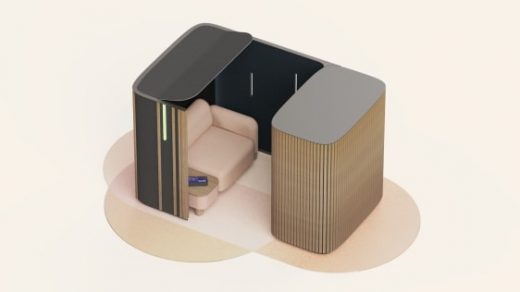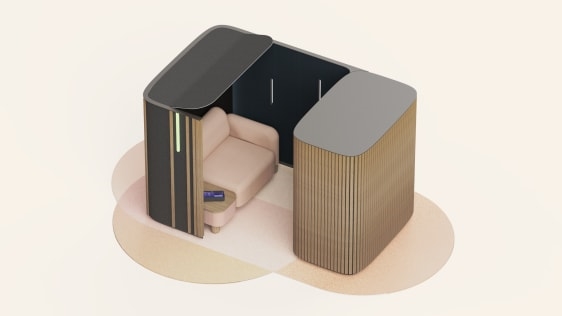Logitech unveils booths for more immersive video calls
Calls on apps like Zoom and Teams have become a regular part of office life, but they can often feel a good deal different than having a conversation in person.
To make one-on-one video chats feel a bit more personal, webcam giant Logitech and office furniture maker Steelcase are developing a next-generation video-calling booth designed to feel more like participants are in the same room.
“We’ve been trying to solve the problem for a while of how do you make videoconferencing more human,” says Scott Wharton, VP and general manager for B2B at Logitech.
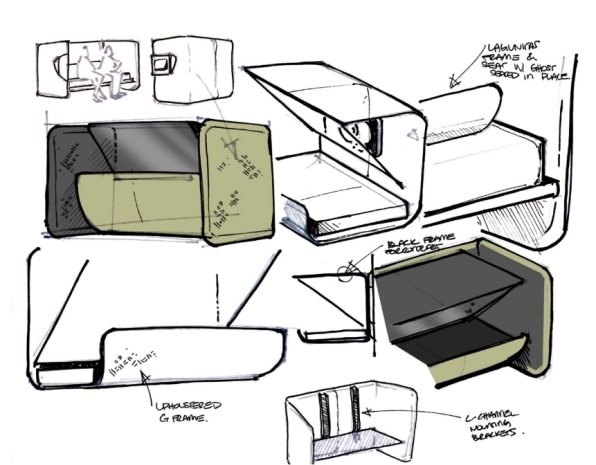
The prototype booths, which made their debut at the Integrated Systems European audiovisual tech conference this week, let one or, at most, two participants on each side of a call sit on a comfortable couch alongside a table inside a sealed-off booth. The other participant in the call appears in a large format projection, using a mirror-based, hologram-esque technique called Pepper’s Ghost that makes the person appear to be in the same room, rather than simply on a video screen.
Work on the concept began at Logitech in late 2021, amid the pandemic-era boom in videoconferencing. The company aimed to create a more immersive calling experience that could be turned into a product using existing equipment, rather than relying on future advances in virtual reality or other speculative areas of technology. Pepper’s Ghost, in particular, first saw popularity in Victorian-era British theatre productions.
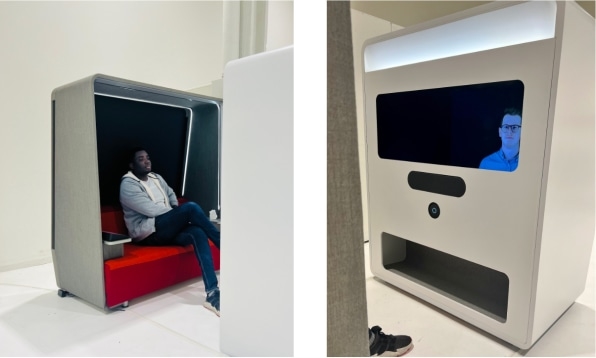
“We’re using really old and kind of boring things but put together in a new way to try to solve these problems,” says Alex Mooney, manager of alliances and go-to-market at Logitech.
Initial versions began with equipment already in the office, plus purchases of off-the-shelf components from big box outlets like Home Depot and Ikea, recalls Mooney. Then, the company began to work with cabinetmakers, and then with Steelcase, to fashion something a bit more appealing. Early iterations looked more like a desk, and have evolved into the current setup with the cozy lounge component and the area where the other participant’s “digital counterpart” appears.
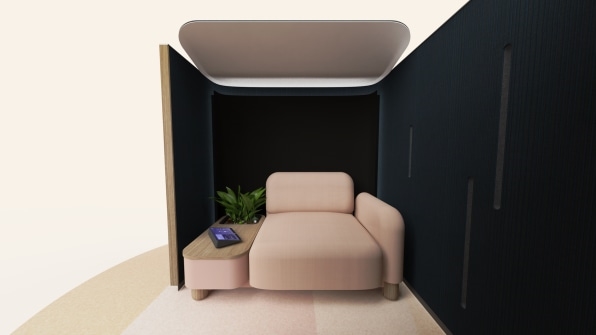
“Even the lounge chair and even adding a little biophilia and a plant there [on the table], it just gives you the ability to feel very comfortable and very suited for any type of one-on-one conversation,” says Christina Vernon, director of distributed collaboration solutions and technology partnerships at Steelcase.
Under the hood, the prototype relies on Logitech’s existing Rally Plus line of videoconferencing equipment. Cameras, speakers, and microphones are positioned to be hidden in an effort to keep conversations more natural, with the projection system and seating designed to create a natural face-to-face conversation—the camera is positioned to make the user appear to be looking at their conversation partner’s eyes. Logitech anticipates the tool will be especially useful for sensitive one-on-one conversations, such as with supervisors and mentors, as well as potentially for job interviews, health consultations, and educational purposes.
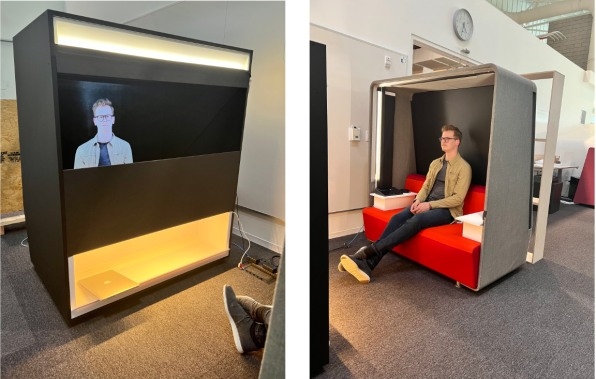
The system is compatible with existing videoconferencing tools, including Zoom, Teams, and Google Meet, with a tablet inside the booth used for setting up and configuring calls. That means that it’s possible to use the booth even to join group calls or other scenarios where other participants won’t have a booth installed. The setup also can be used for other purposes, like recording natural-seeming video for webinar presentations and taking advantage of the booth’s neutral background and eye-level camera setup.
“If you are someone who is an influencer or a broadcaster, you want to have that perfect eye gaze with everyone you speak to,” says Rishi Kumar, director of alliances and go-to-market at Logitech.
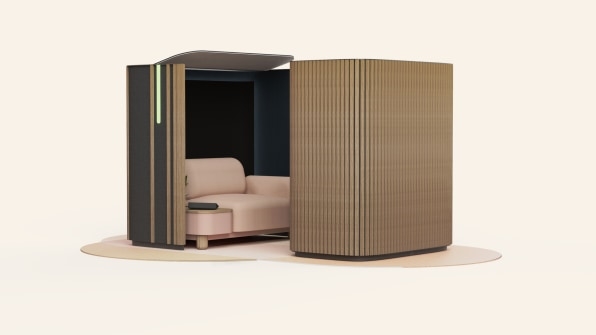
Logitech plans to gather feedback on the existing prototype at the ESE conference and at a Steelcase showroom in New York within a few months. Then, the two companies intend to continue iterating the design, with an eye toward releasing a purchasable product some time next year. Price points will depend on the exact design and form factors, but the companies say they want the system to be fairly affordable.
“We would want this to be priced very thoughtfully in the market where it would be very approachable for all kinds of collaboration opportunities,” says Vernon.
(27)

